
The geology team: From left to right: Lilja Rún Bjarnadóttir, Valérie Bellec, Christine Tømmervik Kollsgård and Margaret Dolan. Photo: Margaret Dolan

The geology team: From left to right: Lilja Rún Bjarnadóttir, Valérie Bellec, Christine Tømmervik Kollsgård and Margaret Dolan. Photo: Margaret Dolan
Published: 26.04.2024
After the video surveys we process a sediment sample obtained with the ROV. At a few stations, additional sampling gear is deployed to get additional information on the sediment composition, genesis and chemical properties.
MAREANO seabed mapping is based on video surveys, supplemented by biological, geological and chemical sampling. Video surveys are systematically planned to document the different seabed environments within the survey area on any given cruise.
Each video survey runs in a straight line for around 200 m, and several are taken each day, so video logging is a large part of our working day. Geologists and biologists sit together in the video room and interpret the live-stream video coming from the seafloor. We document the seabed sediment type and note any visible geological processes, while the biologists log the fauna. Very often changes in the geology are reflected in the biology.
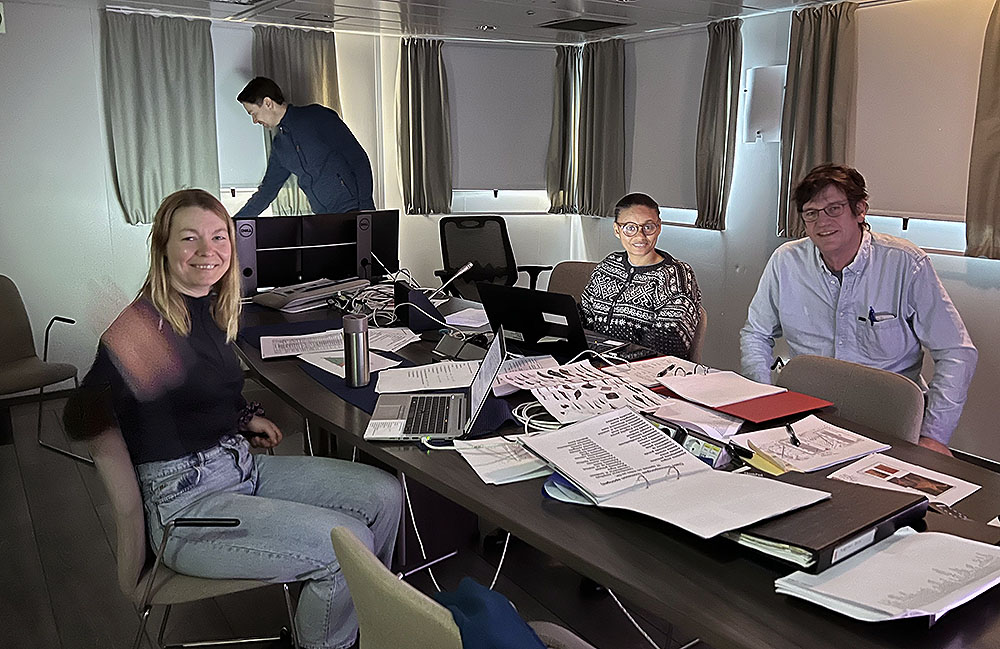
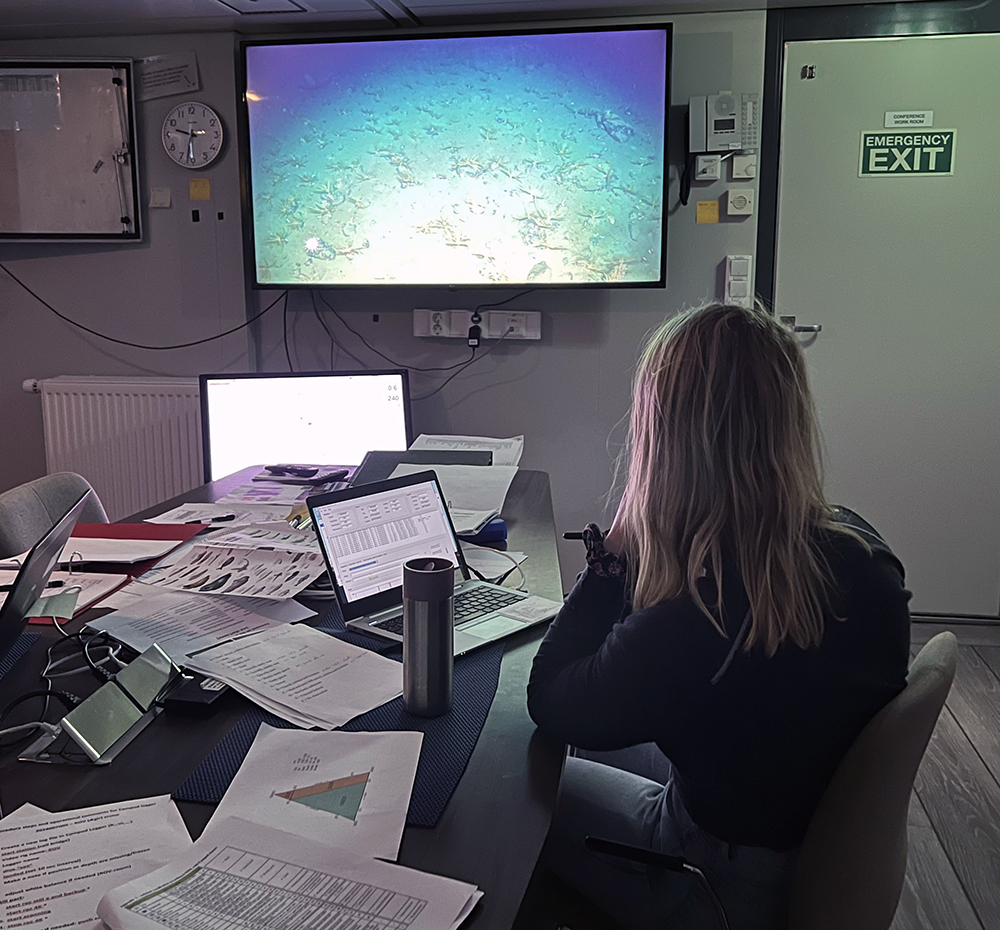
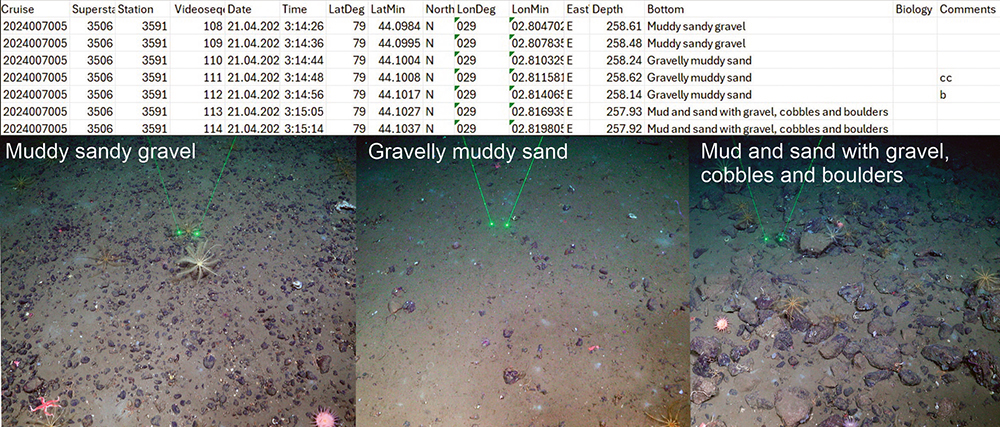
Since distinguishing substrate type from video is not always straight forward, we obtain samples from the seabed to help verify our observations. During this cruise, we are using the Remotely Operated Vehicle (ROV) Ægir 6000 for the video surveys. We also use the ROVs’ manipulator arm to push 40 cm long tubes into the seabed to retrieve short sediment cores at soft-bottom locations. Where the seabed is too hard for a core, we use a metal scoop to take a sample. These samples help verify our video observations and their geological properties are logged in detail. A small sub-sample is taken back to NGU to aid post-cruise interpretation.

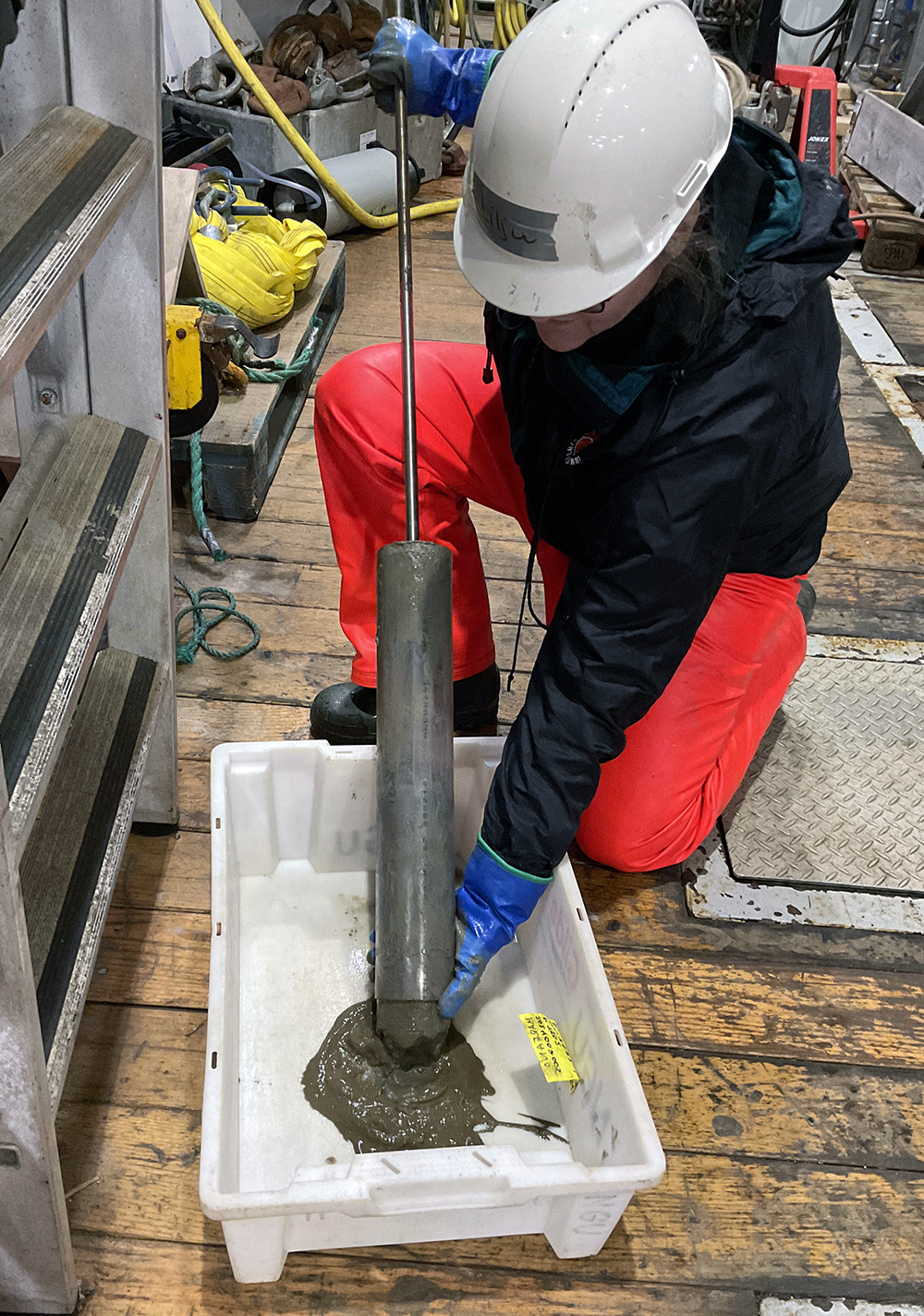
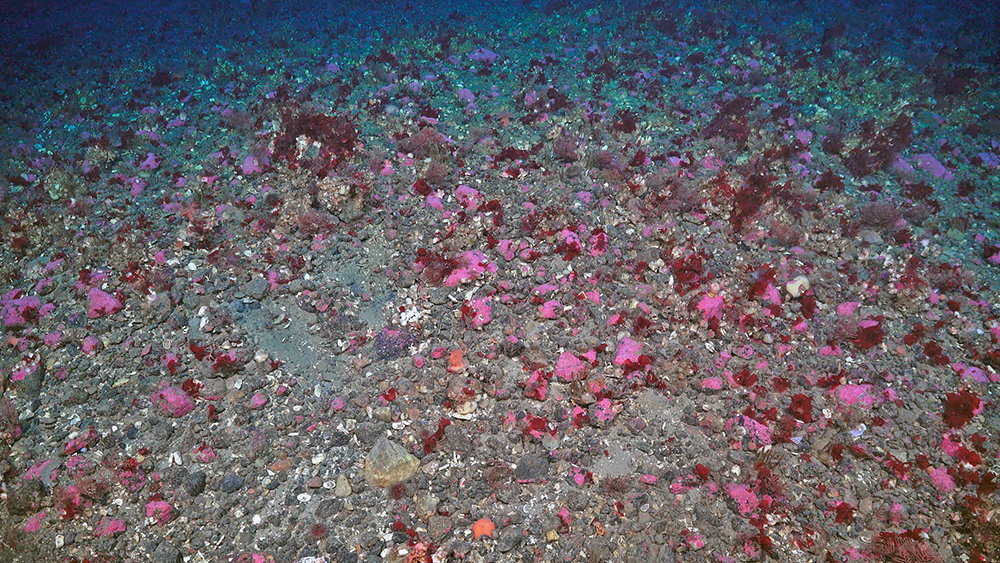
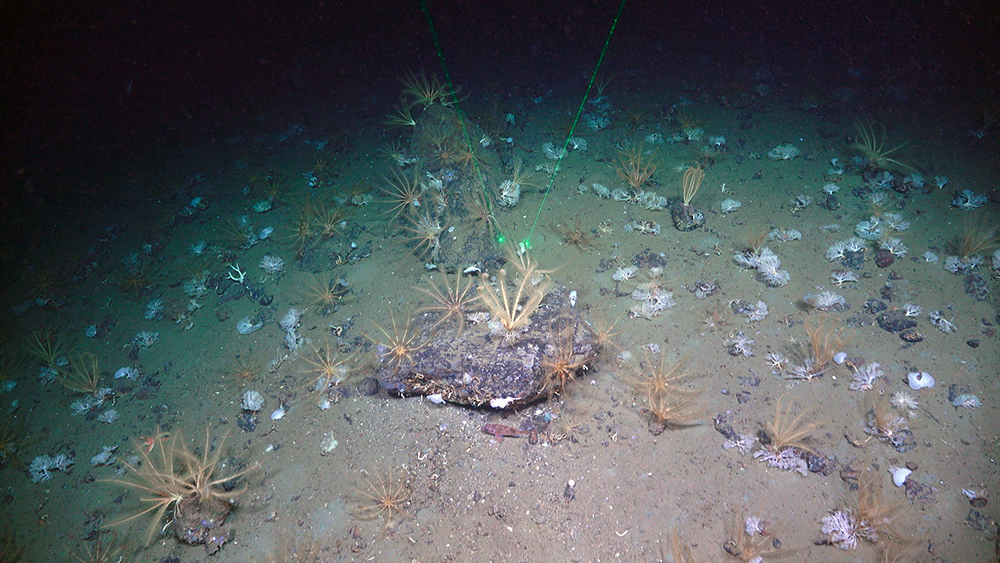
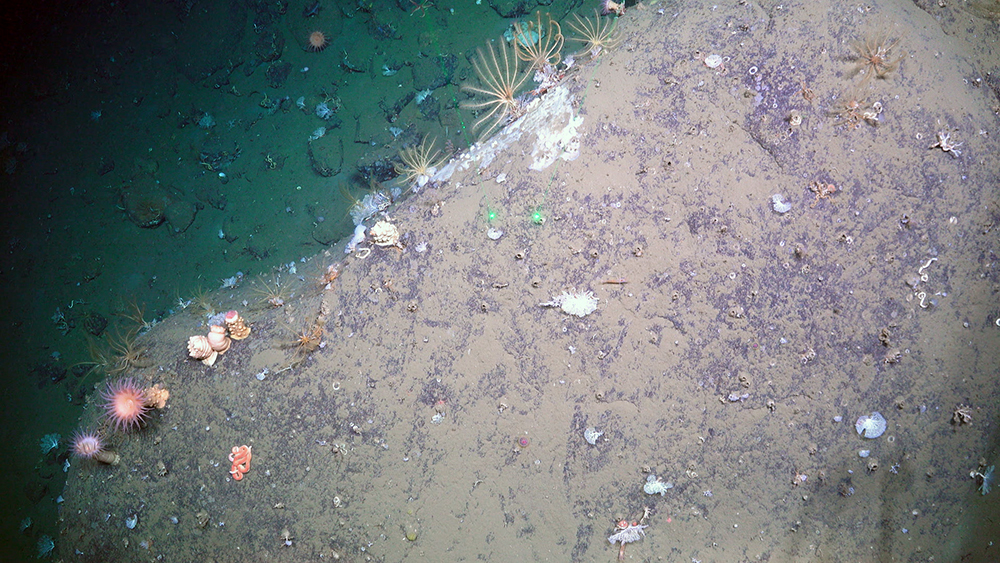
At some stations, we use a wider range of sampling gear: grabs, boxcores and multicores and occasionally gravity cores, many of which are shared between the geologists, biologists and chemists on board. Further biological sampling using additional gear can also give useful information for geologists, like the presence of gravel and cobbles, and perhaps the rock types.
Geologists describe the geological properties of samples taken with the grabs and boxcores. These give similar information to the push cores and the scoop but are less deformed as we do not need to push the sediment out of the core to examine them. The most important information we get is the grain size. Other useful characteristics such as the colour, density, the water content or the presence of shells are also recorded for each distinct layer in the sample.
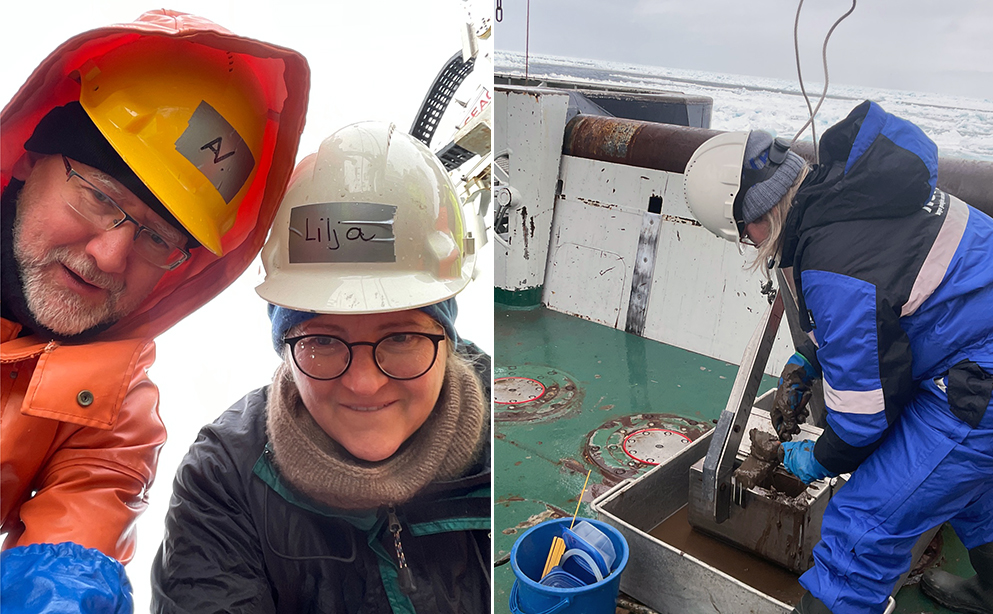
The multicorer is used for chemistry. Onboard we measure, photograph, and describe the sediment characteristics of the multicore samples. Once this is done, we slice the two longest cores and freeze the slices. Then we seal three cores: one will be X-rayed to study its internal structures, while the two others will be analysed for microplastics.
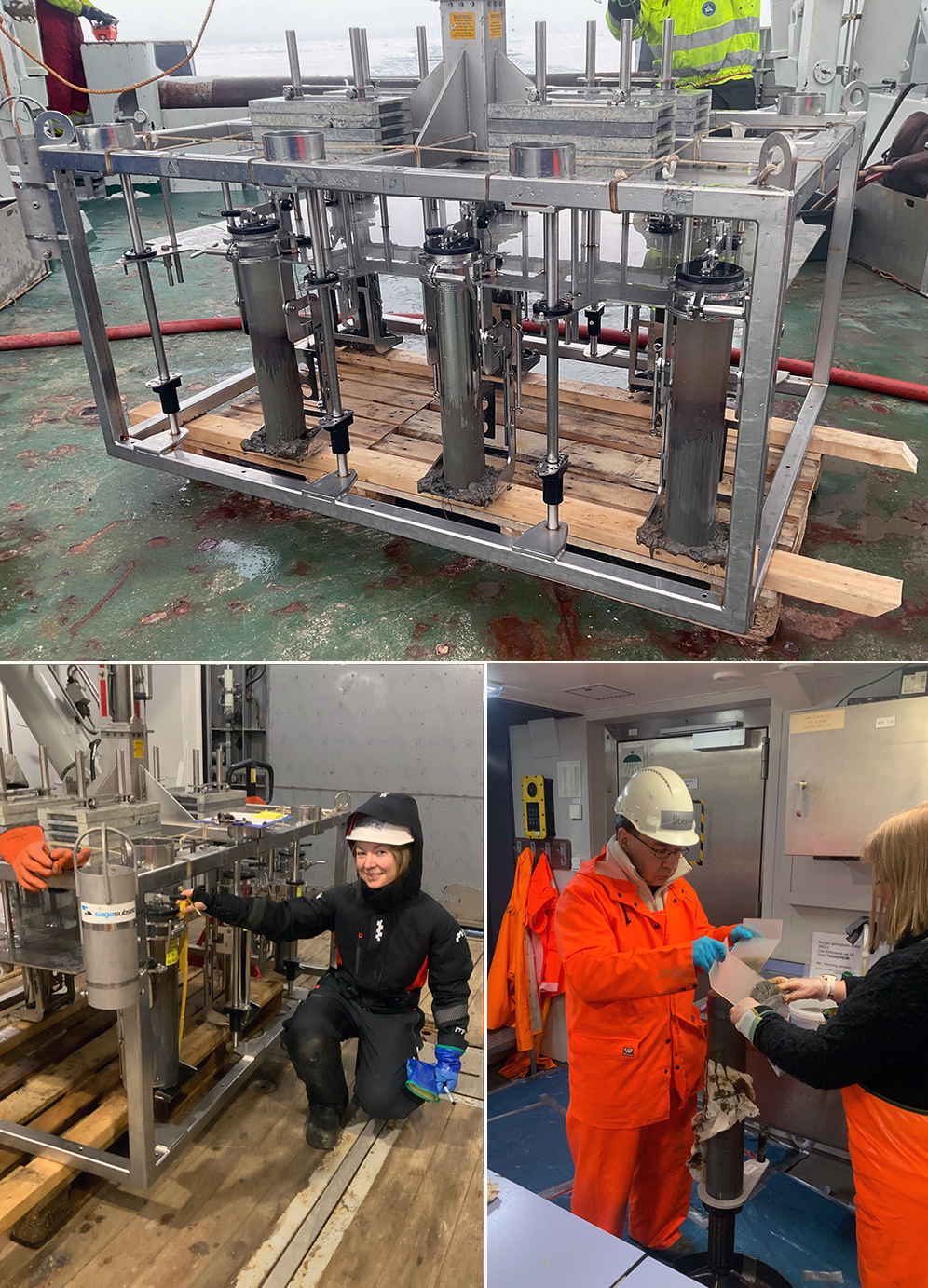
Multicorer on deck after a sample has been taken. Each of the six tubes contains a sample of the sediment: 4 plastic tubes used for chemistry analysis and 2 metallic tubes for microplastics. Here we see geologist Christine Tømmervik Kollsgård measuring the cores (lower left). The longest cores are then sliced. Here the geologist Valérie Bellec and chemist Stepan Boitsov (IMR) work together slicing the core.
Scientific operations run 24/7 with all personnel onboard working shifts. Here is an example of a typical day for the geology team.
|
Time |
Activity |
Geologist Shift |
|
00:00 - 01:30 |
ROV video line
|
B – continued from 20:00 |
|
01:30 - 02:30 |
Process push core/scoop during transit to next station
|
B |
|
02:30 - 04:00 |
ROV video line
|
B |
|
04:00 |
Change of shift. |
A |
|
04:00 – 05:00 |
Process push core/scoop during transit to next station
|
A |
|
05:00 – 06:30 |
ROV video line
|
A |
|
06:30 – 07:30 |
Process push core/scoop during transit to next station
|
A |
|
07:30 – 09:00
|
ROV video line Rolling breakfast 07:30-08:00 for shift A |
A |
|
09:00 – 10:00 |
Process push core/scoop during transit to next station
|
A |
|
10:00 – 10:30 |
CTD deployment. This oceanographic instrument tells us the temperature and salinity at the seabed, and also how these properties vary throughout the water column
|
A |
|
10:30 – 12:00 |
ROV video line
|
A |
|
11:30 – 12:30 |
Lunch before (shift A) or after the shift (shift B)
|
A/B |
|
12:00 |
Change of shift |
B |
|
12:00 – 15:00 |
5 Grabs, one is described in detail and sampled by the geologists, additional grabs are acquired for biologists but also logged by geologists
|
B |
|
15:00 – 16:00 |
Multicore. This is done when the beamtrawl and the RP-sledge are in the water
|
B |
|
16:00 |
Change of shift |
A |
|
16:00 – 19:00 |
Multicore. This is done when the beamtrawl and the RP-sledge are in the water, and during the transit to the next video line
|
A |
|
17:30 – 18:15 |
Dinner when possible between 17:30 – 18:15 for shift A, dinner off shift for shift B
|
A / B |
|
19:00 – 20:30 |
ROV video line, and finishing the work on the multicore if necessary
|
A |
|
20:00 |
Change of shift |
B |
|
20:30 – 21:30 |
Process push core/scoop during transit to next station
|
B |
|
21:30 – 22:00 |
ROV video line
|
B |
|
22:00 – 23:00 |
Process push core/scoop during transit to next station
|
B |
|
23:00– 00:30+1 |
ROV video line |
B |
While on board we also do some initial data processing, go through all the videos to grab pictures from the seabed and interesting geological features, and write cruise diaries for the MAREANO website.
Along with the other scientists we are also responsible for keeping our labs, conference room and the look-out deck clean. This makes for a busy schedule but in the few hours we have off each day we can work out in the gym, take a stroll on the helideck or be on the look-out for marine mammals.
